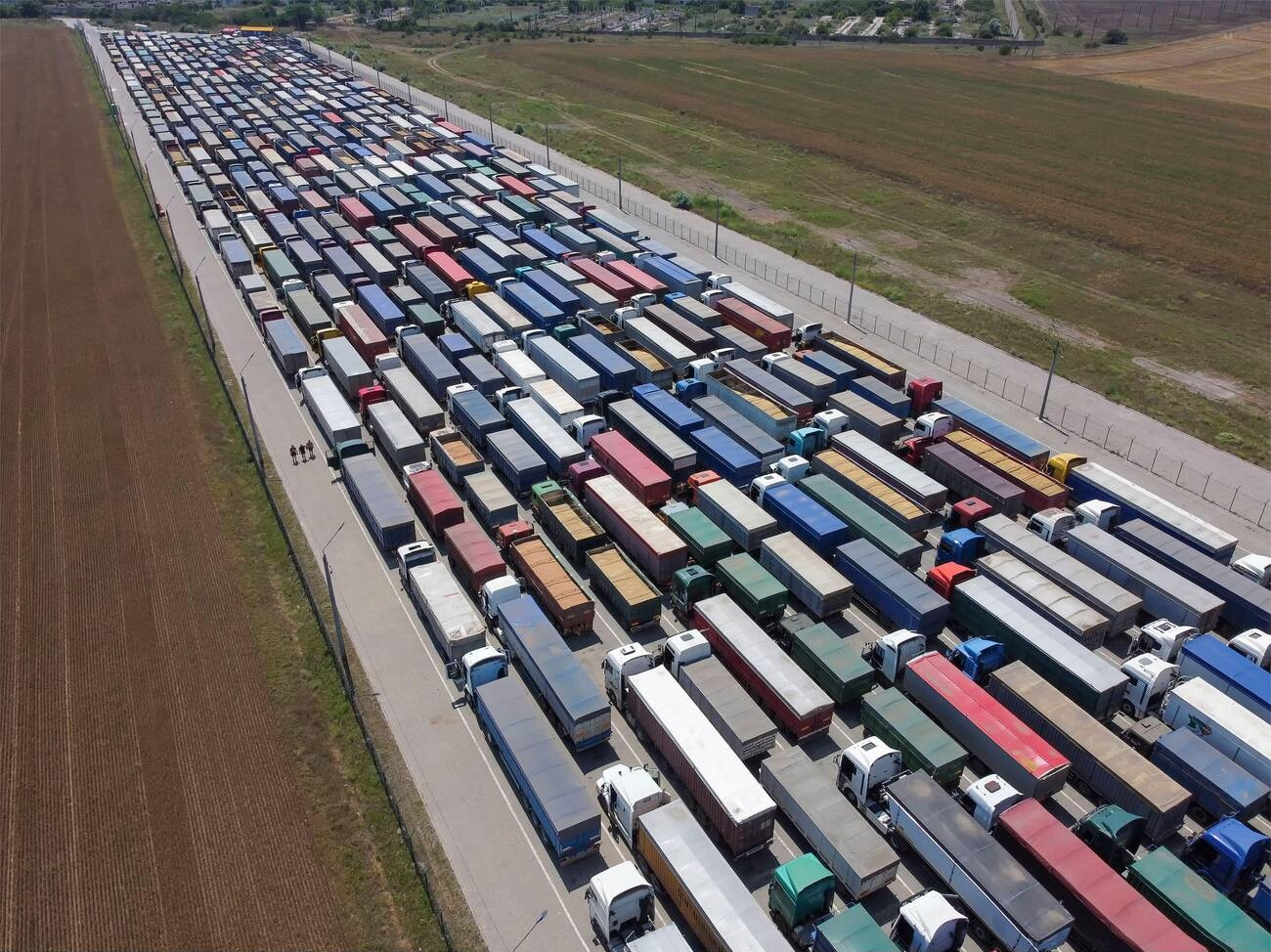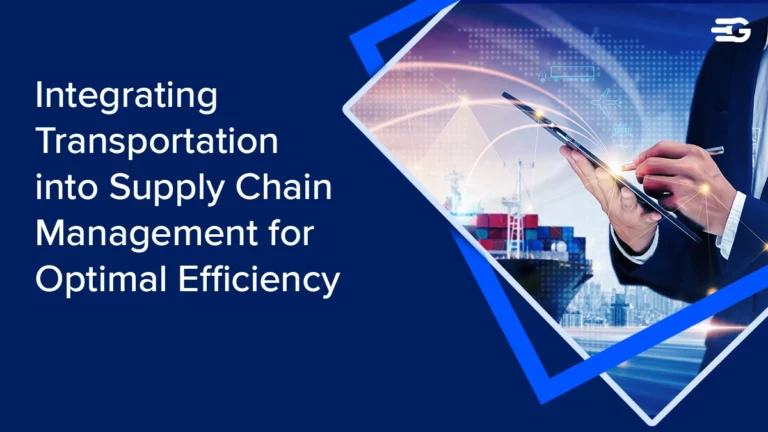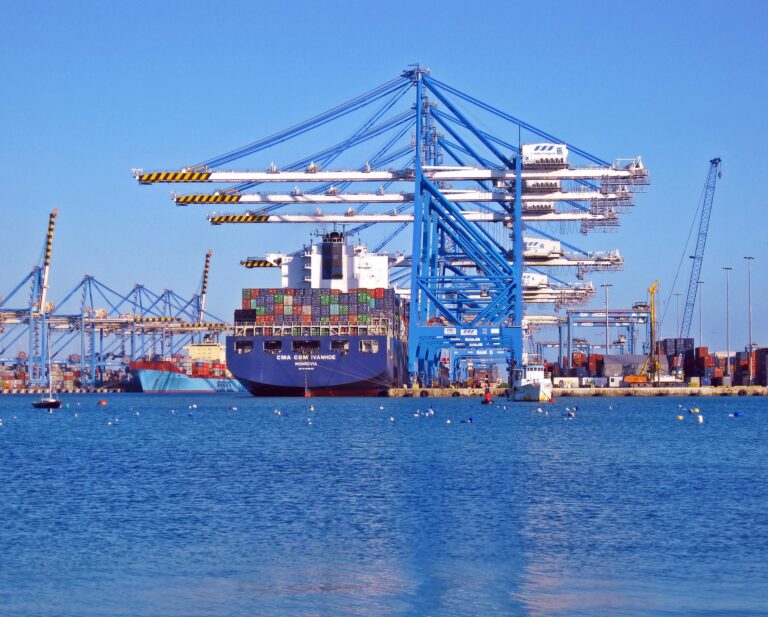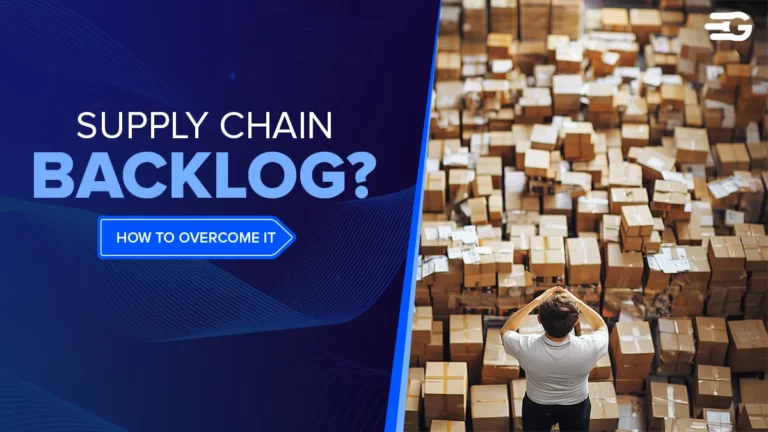Addressing OS&D in Logistics for Improved Operations
Have you ever received a shipment and upon delivery discovered that certain things were missing or damaged? These accidents occur in the bustling industry of logistics. However, they may be expensive and annoying for companies whose operations depend on efficient shipment.
This is when being aware of OS&D becomes essential. Overage, Shortage, and Damage is referred to as OS&D. It highlights differences between what actually arrives at the destination and the quantity and condition of goods stated on transportation documents (such as a bill of lading).
Through this blog we will guide you to navigate the world of OS&D. We’ll clarify every step of the procedure, from seeing inconsistencies when you arrive to making claims. We’ll look at how OS&D affects your company’s profits and clientele. Most significantly, though, we’ll provide you advice on how to avoid these problems and show you how to use technology to make shipping easier and more transparent.
Understanding the OS&D Process
In the field of logistics, even little setbacks might result in major problems. Understanding the OS&D process is therefore essential for companies of all sizes. But why is understanding this process so important?
Key Components of OS&D
The three main pillars of OS&D are Overages, Shortages, and Damages. Each is crucial to guaranteeing precise and effective deliveries. Let’s examine each component in turn:
Overages: When you receive more things than what is specified on the shipping documents, this is referred to as an overage. Despite their apparent benefits, they might be logistically challenging. Overstock can make inventory management more difficult and necessitate more storage space. Overages may also mean that shipments were made incorrectly and meant for a different address, in which case you will need to start the process of returning the extra items.
Shortages: When you receive less items than what is specified in the shipping documentation, a shortage occurs. This could be a serious problem that causes manufacturing delays, disgruntled consumers, and lost sales. In order to determine whether the items were indeed lost or misplaced during shipment, it is imperative that shortages be promptly identified. To find the missing items or request replacements, you may need to get in touch with the shipper, depending on the severity of the situation.
Damages: Items that arrive in a non-functional or useless state as a result of improper handling during shipping are considered damaged goods. This can include anything from small cosmetic flaws to a product that fails completely. Damaged goods are unsellable and frequently need to be replaced or disposed of, wasting money and even upsetting customers. It’s crucial to carefully check packages upon arrival and record any damage for filing claims with the carrier.
The Importance of Accurate Freight Documentation
Without proper documentation, managing OS&D can be like figuring out the way without a map. An efficient OS&D logistics management system is built on accurate goods documentation. Here’s the reason why:
Establishing a Baseline: Bills of lading, packing slips, and business invoices are examples of shipping documents that give an accurate image of the cargo. Finding disparities after arrival depends on this recorded baseline.
Facilitating Claims Filing: Accurate documentation serves as unquestionable proof to back up your claims with carriers in the event of shortages or damages. It is far more difficult to recover costs in the absence of adequate documentation.
Ensuring transparency: Throughout the supply chain, openness is promoted via accurate and thorough documentation. It reduces the possibility of mistakes and disagreements by giving shippers, carriers, and consignees a clear grasp of the shipment specifics.
Streamlining Investigations: Investigations are streamlined when there are differences since detailed documentation makes the process go more smoothly. Maintaining clear records of weight, dimensions, and itemized contents allows investigators to pinpoint the root cause of the issue more efficiently.
The Impact of OS&D on Logistics Operations
Even though Over, Short, and Damaged (OS&D) problems may appear to be small accidents, they can have a significant impact on your entire logistics operation. It is essential for companies of all sizes to comprehend the effects of OS&D. Acknowledging the potential for monetary losses and inefficiencies in operations, you may proactively handle OS&D, optimize your supply chain, and eventually guarantee a more profitable and seamless business process.
Financial Ramifications
Issues with OS&D can have a big effect on a company’s bottom line and logistics suppliers’ bottom line. Now let’s explore the financial implications:
For businesses, shortages can result in lost revenue due to unfulfilled orders and missed sales opportunities, while overages can lead to storage costs and inaccurate inventory records, potentially causing overstocking or understocking issues. In addition, there are extra expenses associated with processing claims due to the time and money required to file and pursue damages and shortage claims. To make matters worse, having to replace damaged goods further reduces profits and strains finances.
Whereas for logistics providers, the challenges include bearing the cost of damage claims as carriers are liable for compensating businesses for goods damaged during transport. In addition, addressing shortages and overages necessitates more time and materials for repackaging, sorting, and perhaps processing returns, which raises handling costs. Carriers run the additional danger of being fined for improper handling of products, which can lead to large financial losses.
Businesses and logistics providers can reduce these costs by managing OS&D effectively, which will make the supply chain more profitable and cost-effective for all parties involved.
Operational Challenges
In addition to their financial consequences, OS&D issues can lead to a series of operational difficulties that hinder the efficient running of your logistics. Here’s how:
Delays in Processing and Deliveries: Finding inconsistencies after shipments arrive may cause delays in processing and delivery, which may affect customer satisfaction and result in higher storage expenses.
Inventory Inaccuracy: Inventory management systems are disrupted by unreported overages or shortages, which makes it challenging to maintain precise stock levels and effectively complete orders.
Warehouse Inefficiencies: Handling damaged goods, settling disputes, and sorting through excess inventory can put a pressure on warehouse resources and slow down operations as a whole.
Disrupted Production Schedules: Shortages can cause delays in production plans for companies that depend on just-in-time inventory management.
Root Cause Analysis: Determining the root cause of OS&D occurrences, be it theft, improper handling, or packaging problems, takes time and resources.
Strategies for Managing OS&D
We’ve talked about the nuances of the OS&D process, how it affects your bottom line and operations, and how crucial precise documentation is. Now, it’s time to dive into the skills necessary to successfully navigate these differences.
Preventative Measures
When it comes to OS&D management, the age old saying of “prevention is better than cure” rings true. You could drastically lower the possibility of differences by putting proactive controls in place throughout your supply chain. Here’s how:
Packaging Practices:
- Select Robust packing Materials: Taking into account variables like weight, distance, and possible handling techniques, select durable packing materials that can endure the rigours of transportation.
- Appropriate Packaging Techniques: Pack the box securely using the right methods to avoid movement or damage while it is being transported. To reduce shifting, use void fill materials to fill up any empty spaces.
- Clear Labelling: Verify that all packages have precise handling instructions, quantities, and descriptions labelled on them. This facilitates proper sorting and identification at each touchpoint.
Loading and Unloading:
- Appropriate Weight Distribution: To avoid crushing or damaging the cargo, distribute the weight equally throughout the vehicle or container.
- Techniques for Securing: To keep pallets and boxes from moving or tipping over during transit, secure them using straps, dunnage, or other suitable measures.
- Extensive Inspections: Examine the packaging and stacking both before and after loading to find any possible problems that can cause damage.
Inventory Management:
- Accurate Recordkeeping: Keep thorough inventory records to guarantee precise order fulfilment and prevent shortages or overruns.
- Regular Cycle Counts: Perform routine cycle counts to compare your records with the physical inventory and spot any differences early on.
- Demand Forecasting: To maximise inventory levels and reduce the chance of stockouts or overstocking, put effective demand forecasting procedures into practice.
Efficient OS&D Claim Filing
OS&D incidents can still happen even with the finest prevention measures in place. Effectively submitting claims to carriers is the key to reducing monetary losses. The following is a step-by-step approach to help you file an OS&D claim:
Document inconsistencies: As soon as the shipment arrives, carefully inspect it. Take note of any inconsistencies on the delivery receipt (also known as the proof of delivery, or POD) before signing, such as missing products, damaged goods, or overages. Take images of any damaged objects so you have proof. Additionally, be sure to save copies of all pertinent paperwork, such as the business invoice, packing slip, bill of lading, and images of any damaged goods.
Submission Deadlines: There are tight deadlines for filing OS&D claims with most carriers. Take immediate action; to find out the exact insurance term for the carrier, consult it.
Assemble supporting documentation: Gather copies of the shipping documents, photos of the damaged products, and the delivery receipt with verified inconsistencies.
File the Claim: To file a claim, get in touch with the carrier. The majority of carriers allow you to file claims online, but you may also be able to do it by phone or email. For more instructions, see the carrier’s website or contact details. Provide a detailed description of the discrepancy (shortage, damage, overage) in your claim, together with item descriptions and quantities, and supporting documentation (photos and copies of documents).
Follow Up on the Status of Your Claim: Be proactive, stay in touch with the carrier, and periodically find out how your claim is progressing. This shows that you have been working hard to find a solution.
The Role of Technology in OS&D Management
Supply chain management software is transforming almost every area of business operations in today’s data-driven environment. There is no exception in the field of OS&D management. Businesses can have a substantial advantage in reducing inconsistencies, expediting the resolution of claims, and attaining increased transparency in the supply chain by using modern technical solutions.
Digital Solutions for OS&D Monitoring
OS&D management is about to undergo a technological revolution. Businesses should anticipate a paradigm shift in the way they track and handle inconsistencies as artificial intelligence (AI) and the Internet of Things (IoT) become more thoroughly integrated into logistical operations. Here’s a look into OS&D’s future, driven by cutting-edge technology:
Real-time Condition Monitoring: Envision sensors integrated into packaging that communicate in real-time information on variables like impact, humidity, and temperature throughout transportation. This data can be analyzed by AI systems, which can identify any problems before they arise and enable prompt damage mitigation measures and proactive action.
Blockchain and Smart Contracts for Transparency: Blockchain technology has the potential to completely transform logistics record-keeping. Blockchain assures total transparency and accelerates claim resolution by generating a safe, unchangeable record of each stage of the cargo process. When disparities are confirmed, smart contracts—self-executing agreements that take action based on predefined conditions—have the ability to automatically pay claims.
Predictive analytics for proactive OS&D prevention: Using real-time shipment data and previous OS&D data, advanced data analytics can identify patterns that may indicate future discrepancies. This allows businesses to take preventative measures, such as implementing route optimizations to minimize handling or investing in sturdier packaging for fragile goods on high-risk routes.
Future Trends in OS&D Management
Logistics as a field is constantly evolving, and OS&D management is no exception. By staying ahead of the curve and understanding emerging trends, businesses can gain a significant competitive advantage.
Building a Resilient Supply Chain
While it is important to comprehend OS&D and its effects, creating a robust supply chain that reduces disparities in the first place is where the real power is found. Here are some crucial tactics to accomplish this:
Diversification is Key: There is only one point of failure when you depend only on one provider or carrier. Using a variety of carriers and diversifying your supplier base helps reduce the chance of disruptions coming from a single source.
Invest in Durable Packaging: Good packaging keeps your products safe while they travel. For products to stay safe and endure possible handling rigours, use premium materials, padding, and void fill.
Implement Standard Operating Procedures (SOPs): All facets of your supply chain, including loading and packaging as well as warehouse operations and communication procedures, should have explicit SOPs in place. Standardized processes reduce mistakes and guarantee that all parties are in agreement.
Accept Technology: As was previously mentioned, technology is revolutionizing OS&D management. Utilize automation technologies, data analytics, and real-time tracking to increase visibility, spot trends, and take preventative measures against possible problems.
Prioritize Communication and Collaboration: It is crucial to maintain open lines of communication and cooperation with all parties involved in your supply chain, including suppliers, carriers, and logistics partners. Identifying and resolving differences more quickly is made possible by cooperation and information sharing.
Conclusion
OS&D (Over, Short, and Damage) can be a thorn in the side of any logistics operation. Delays, disgruntled consumers, and lost revenue are possible outcomes. However, organisations can greatly lessen the incidence and impact of OS&D by comprehending the process and putting effective policies into place.
The numerous facets of OS&D administration have been covered in this blog post, from the significance of precise documentation to the comprehension of the various kinds of discrepancies. Additionally, we’ve covered the operational and budgetary difficulties brought on by OS&D and offered workable solutions.
One important thing to remember is how important technology is to contemporary OS&D management. Innovative tools, such as predictive analytics and real-time shipment tracking, are revolutionizing the way firms identify and resolve discrepancies. Businesses can obtain a major advantage in creating a supply chain that is more resilient, transparent, and efficient by adopting these technologies.
Recall that being proactive is essential. Businesses may considerably lower OS&D incidents and guarantee a more seamless flow of goods across their supply chain by putting preventative measures into place, such as proper packaging and SOP formulation, and by leveraging technology for real-time monitoring and data analysis. This results in increased customer satisfaction, stronger financial results, and a competitive edge in the quick-paced logistics market of today.






